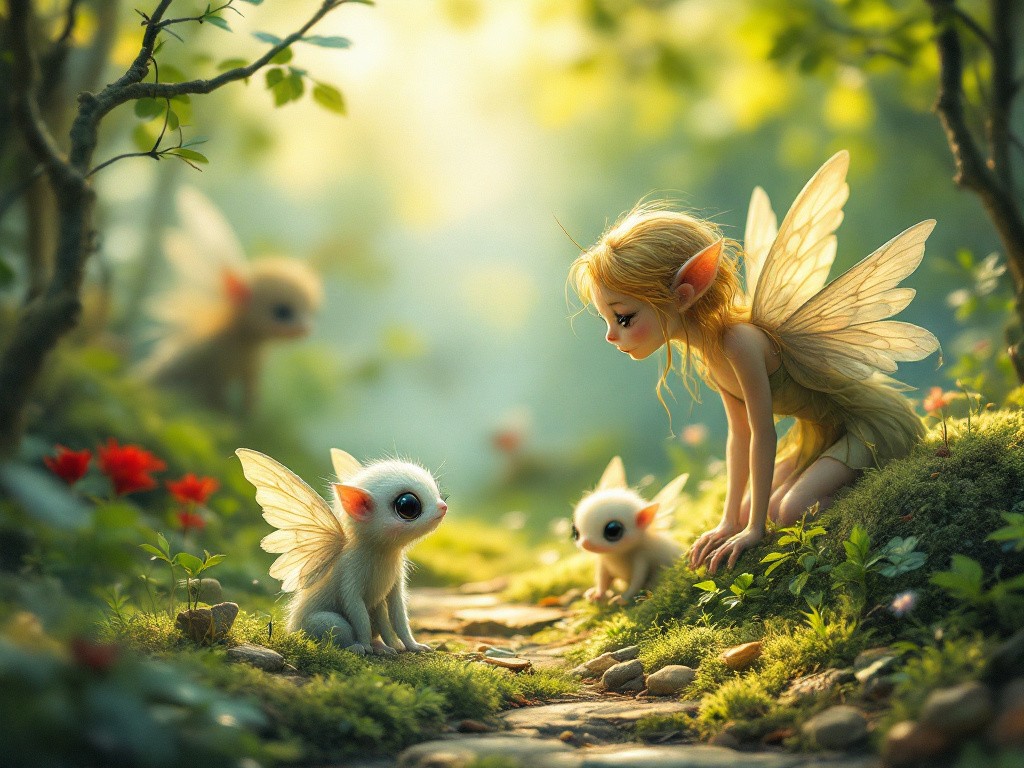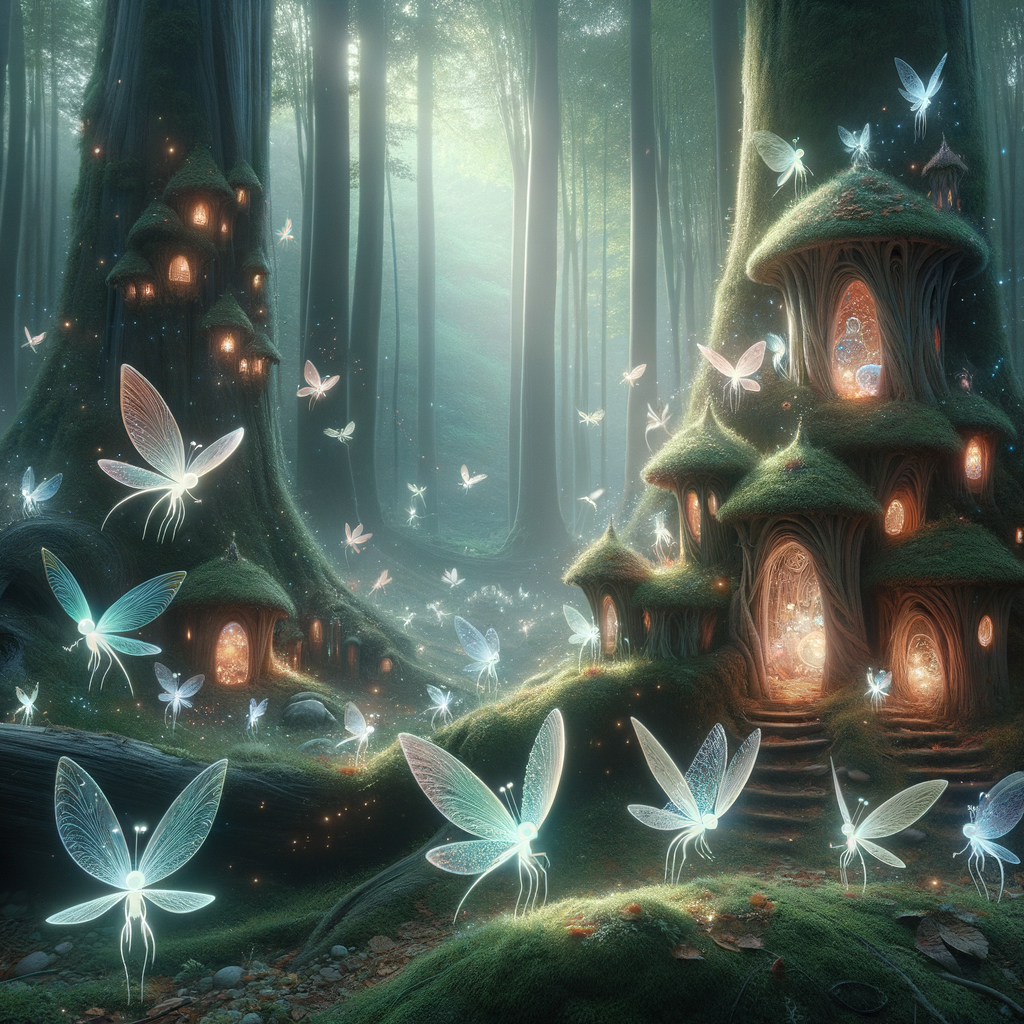Introduction
Fairy-like creatures have captivated human imagination for centuries. These mystical beings, often depicted as small and ethereal, appear in folklore across various cultures. From the pixies of England to the leprechauns of Ireland, these creatures are often associated with magic, mischief, and the natural world. Their stories have been passed down through generations, evolving over time but always maintaining a sense of wonder and mystery.
In this article, we will explore the origins, characteristics, and cultural significance of these small fairy-like creatures. We will also delve into some of the most famous examples from folklore, examining how they have influenced literature, art, and popular culture.
The Origins of Fairy-Like Creatures
Fairy-like creatures have their roots in ancient mythology and folklore. Many cultures believed in the existence of supernatural beings that inhabited the natural world, often unseen by human eyes. These creatures were thought to possess magical powers and could either help or hinder humans, depending on their mood or the situation.
In Celtic mythology, for example, fairies were often associated with nature and the elements. They were believed to live in forests, rivers, and other natural settings, where they could influence the environment around them. Similarly, in Norse mythology, there were beings known as elves who were closely tied to nature and had the ability to control the forces of the earth.

The Role of Fairies in Folklore
Fairy-like creatures often play a dual role in folklore. On one hand, they can be benevolent and helpful, offering assistance to humans in need. On the other hand, they can be mischievous or even malevolent, causing trouble for those who cross their path.
For example, in Irish folklore, leprechauns are known for their trickery and love of gold. They are often depicted as small, bearded men who guard hidden treasures. While they can be helpful if treated with respect, they are also known for playing pranks on those who try to outsmart them.
In contrast, pixies from English folklore are generally seen as more playful and lighthearted. These tiny creatures are often depicted as dancing in the moonlight and helping humans with small tasks, such as cleaning or mending clothes. However, they can also be mischievous, leading travelers astray or playing tricks on those who venture into their territory.
Famous Fairy-Like Creatures in Folklore
1. Pixies
Pixies are one of the most well-known fairy-like creatures in English folklore. These small, winged beings are often associated with the countryside, particularly in the Devon and Cornwall regions of England. They are typically depicted as playful and mischievous, but not malicious. Pixies are known for their love of dancing and music, and they are often said to gather in large groups to dance in the moonlight.
2. Leprechauns
Leprechauns are a staple of Irish folklore and are often depicted as small, bearded men dressed in green. They are known for their love of gold and their ability to grant wishes to those who capture them. However, leprechauns are also notorious for their trickery, and they often find ways to escape from those who try to outsmart them.
3. Brownies
In Scottish and English folklore, brownies are small, helpful creatures that live in houses and assist with household chores. They are typically depicted as being shy and reclusive, only coming out at night to do their work. Brownies are known for their loyalty to the families they serve, but they can also be offended if they are mistreated or if their work goes unappreciated.
4. Elves
Elves are a prominent feature in Norse mythology and later in European folklore. These small, magical beings are often associated with nature and are believed to have the ability to control the elements. In some traditions, elves are seen as benevolent creatures who help humans, while in others, they are more mischievous and can cause harm if provoked.
5. Tinker Bell
Although not a traditional figure from folklore, Tinker Bell has become one of the most famous fairy-like creatures in modern popular culture. First introduced in J.M. Barrie’s play Peter Pan, Tinker Bell is a small, winged fairy who is fiercely loyal to Peter Pan. She is known for her mischievous personality and her ability to fly, thanks to her magical fairy dust.

The Cultural Significance of Fairy-Like Creatures
Fairy-like creatures have played an important role in the folklore and mythology of many cultures. They often serve as symbols of the natural world, representing the mysterious and magical forces that exist beyond human understanding. In many traditions, these creatures are seen as guardians of nature, protecting the environment from human interference.
In addition to their connection to nature, fairy-like creatures are often associated with themes of transformation and change. Many stories depict fairies as shape-shifters who can change their appearance at will, or as beings who can grant wishes and alter the course of events. This ability to influence the world around them makes fairies powerful symbols of magic and possibility.
Fairies in Literature and Art
Fairy-like creatures have been a popular subject in literature and art for centuries. In medieval times, fairies were often depicted in romantic and chivalric literature, where they were portrayed as beautiful and otherworldly beings who could grant favors to knights and heroes.
During the Victorian era, there was a resurgence of interest in fairy folklore, particularly in England. Artists and writers of the time were fascinated by the idea of fairies as symbols of innocence and purity, and they often depicted them in their works. This period saw the publication of many famous fairy tales, including J.M. Barrie’s Peter Pan and George MacDonald’s The Princess and the Goblin.
In modern times, fairy-like creatures continue to be a popular subject in literature, film, and television. From the fairy godmothers of Disney films to the elves of The Lord of the Rings, these magical beings have become an enduring part of popular culture.

FAQ
1. What are fairy-like creatures in folklore?
Fairy-like creatures are small, magical beings that appear in the folklore of various cultures. They are often associated with nature and magic, and they can be either helpful or mischievous, depending on the situation.
2. Are fairies and elves the same thing?
While fairies and elves share many similarities, they are distinct creatures in folklore. Fairies are often associated with Celtic mythology, while elves are more commonly found in Norse and Germanic traditions.
3. What is the difference between a pixie and a fairy?
Pixies are a specific type of fairy-like creature found in English folklore. They are typically smaller and more mischievous than traditional fairies, and they are often associated with the countryside.
4. Can fairy-like creatures be dangerous?
In some folklore traditions, fairy-like creatures can be dangerous if provoked. For example, leprechauns are known for their trickery, and some fairies are said to lead travelers astray or cause misfortune.
5. How have fairy-like creatures influenced modern culture?
Fairy-like creatures have had a significant influence on modern literature, art, and popular culture. They appear in many famous works of fiction, such as Peter Pan and The Lord of the Rings, and they continue to be a popular subject in films, television shows, and books.
Conclusion
The world of small fairy-like creatures in folklore is vast and varied, with each culture offering its own unique take on these magical beings. Whether they are mischievous pixies, trickster leprechauns, or helpful brownies, these creatures continue to captivate our imaginations and remind us of the magic that exists in the world around us.
By exploring the stories and traditions surrounding these fairy-like creatures, we gain a deeper understanding of the cultural significance they hold and the ways in which they have shaped our collective imagination.
